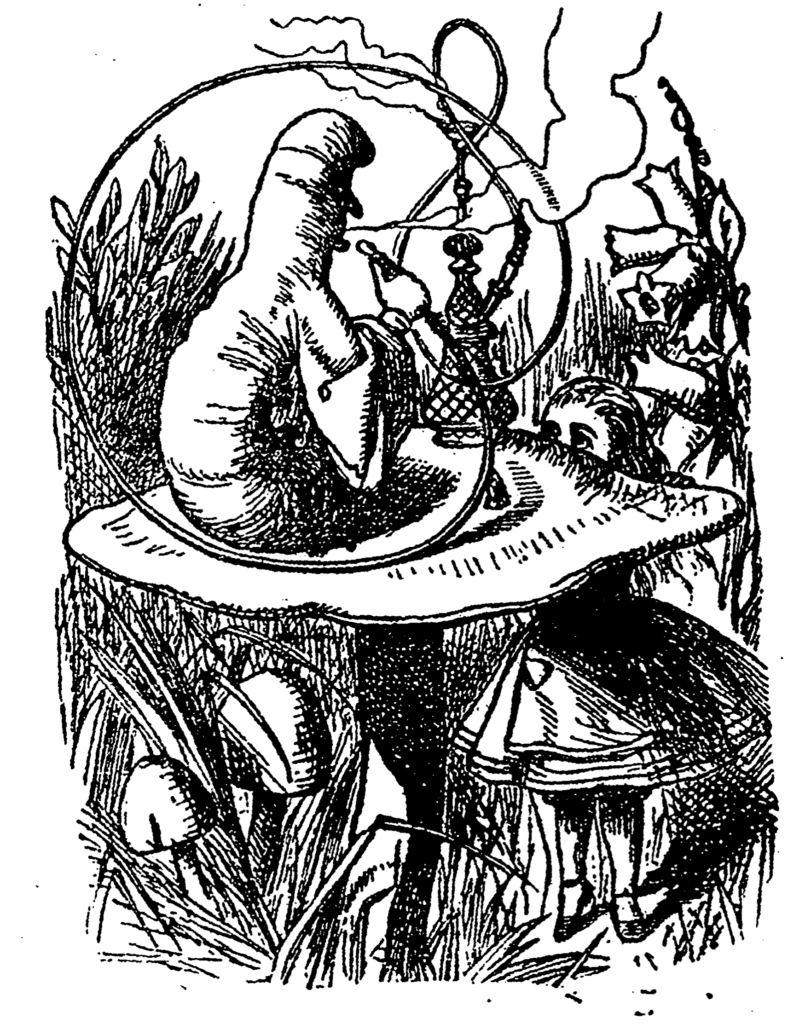by Sandy Burnley

I first engaged with other-than-human animal representations as a master’s student who had just transitioned from veterinary medicine to literature. What these domestic companions had to teach me was not to be found in a clinic but in their sociohistorical imbrication—an entanglement that began to pique my interest when I was a young child reading Anna Sewell’s Black Beauty (1877)and Sarah Trimmer’s The History of the Robins (1786). These entanglements are ubiquitous. Every novel I opened invited interspecies encounters and companionship, but I wanted to know why. Are they simply metaphors for human existence? Or are they conduits who challenge what it means to be human, unraveling the neoliberal and immaterial imaginary that molded the concept of the human in the nineteenth century?
Lewis Carroll’s Alice’s Adventures in Wonderland offered one possible and curious position for its infamous human character. Alice’s perpetual shapeshifting and attempts at sympathizing with other animals dismisses any stringent parameters hoping to contain the “human” and invites a posthumanist reading where the categories between human, animal, and object playfully reorient themselves. However, there was something else happening in the perimeters. I found myself less drawn to Alice and more focused on the anthropomorphized characters who consistently resisted Alice’s attempt to humanize them. Alice’s adventures evolved beyond what it means to be human and instead showcased the immaterial and imaginary mechanisms that makes one human—the sympathetic gaze.
In Alice’s well-known fall down the rabbit hole, Alice engages with a variety of species, such as a rabbit, mouse, pig, and caterpillar, to name a few. Despite Alice entering Wonderland with arguable politeness, Wonderland’s denizens resist every sympathetic attempt that Alice tries to initiate. Such resistance stands out against the backdrop of Victorians’ movement to preach kindness and sympathy for other species, which could inadvertently function off the idea that other species are vulnerable, passive, and helpless in these interspecies entanglements. Unlike in Sewell’s or Trimmer’s work, these characters were not chastising humans for cribbing or cruelty. Rather, these individuals were vehemently protesting the idea that Alice had any idea or way of imagining what it was like to be in their position and to be of their species.
This refusal to accept Alice’s sympathy led me down my own rabbit hole. I began to investigate sympathy as a mechanism in policing such encounters with the help of Audrey Jaffe’s and Rae Greiner’s scholarship and translating David Hume’s and Adam Smith’s notions regarding sympathy to more-than-human encounters. In this investigation, sympathy no longer seemed like a benevolent and noble framework, but another veiled appropriation of foreign experiences that subordinated these animals to a range of human purposes and representations. It was no wonder they refused such attempts. These sympathetic renderings are exactly what placed the infamous rabbit in a waistcoat—the paradoxical inverse of a human in fur. However, in their silence, in the Caterpillar’s truncated responses, and a kitten’s mute arrest, there is so much more to be said. In every encounter, these individuals do not and cannot teach us how to be human. Instead, they demonstrate the harm of positioning an anthropocentric and sympathetic umbrella over a biopolitically diverse population and harboring these animals solely within our domestic purview. Alice’s encounters promote readers to wonder about their own environment and teach us a kind of applicable reverence that places posthumanist thought well into the nineteenth century.
Burnley, Sandy M. “Looking Back: Posthumanism and Sympathy in Alice’s Adventures in Wonderland.” Victorian Review, vol. 48 no. 1, 2022, p. 107-123. Project MUSE, doi:10.1353/vcr.2022.0002.
